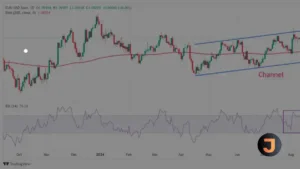The Central government is likely to announce India’s adoption of the “Pillar-2” tax regime anchored by the Organisation for Economic Cooperation and Development (OECD) in the coming Budget, as part of the country’s efforts to support and benefit from the global system combating tax avoidance. The Finance Bill, 2024, passed after the interim Budget presentation, will be amended after the tabling of the full Budget in the second half of July to this effect, an official said, on condition of anonymity. The provisions, however, will be notified and come into effect only from September, the person added.
Pillar 2-GloBE Rules
The Pillar 2-GloBE Rules – which provide for a global minimum tax for “multinational enterprises” (MNEs) – aim to deter profit shifting by ensuring that these firms maintain a minimum Effective Tax Rate (ETR) of 15% across all jurisdictions in which they operate. MNEs, as per the rules, are defined as those entities with a global turnover exceeding 750 million euros.
To make Pillar 2 operational in India, the Centre would have to amend the tax laws to include the rules, namely Qualified Domestic Minimum Top-up Tax (QDMTT), Income Inclusion Rule (IIR), Undertaxed Profits Rule (UTPR), and Subject to Tax Rule (STTR). Essentially, all these rules enable countries, in this case India, to impose a ‘top-up tax’ on either the intermediate parent entity (IPE) or the ultimate parent entity (UPE) of a company that artificially reports profits in a low-tax jurisdiction.
Consider for instance, an MNE group headquartered in India pays corporate tax at a rate of 9% in UAE through its subsidiary. This would mean the remaining 6%, it will have to pay as top-up tax, if India implements the pillar-2 regime.
“For Indian based groups with subsidiaries outside India and having international operations there would be additional tax outflows and an increased compliance burden which would eventually result in increase in Indian government tax revenue,” explained Jalaj Gupta, leader-transfer pricing & tax, SW India.
The official, cited above, however said that any estimate of “possible revenue gains” have not yet been made.
Experts say the Central Board of Direct Taxes (CBDT) would need to issue guidelines, circulars, and FAQs explaining how these rules apply. This includes defining low-tax income, calculating effective tax rates, and ensuring compliance. “All in all, implementing Pillar 2 rules in Indian tax laws requires a comprehensive approach involving legislative changes, administrative guidelines, and international coordination,” said Yeeshu Sehgal, head of tax market, AKM Global.
The pillar-2 regime, in simple words, aims to prevent MNEs from shifting profits to low-tax jurisdictions. By ensuring these companies pay a minimum global tax rate, India can certainly protect its tax base from erosion, some experts say. This should lead to increased revenue as more profits are taxed within the country; but the actual revenue impact will depend on how effectively the rules are implemented and how MNEs respond to the new tax environment, they say.
“From the MNEs standpoint, Indian headquartered groups with subsidiaries in low tax jurisdictions, especially those which have already announced implementation of Pillar 2, should start evaluating the impact of the tax package while preparing consolidated group financials,” said Sehgal.
Since January 1, 2024, over 27 countries (of 130 that signed the multilateral convention) have incorporated the pillar-2 rules in their domestic laws. Indian headquartered MNE groups – having presence in several such jurisdictions – will have to provide for top-up tax in the books of account, if applicable, in their financial statements for the year ended 31st March 2024, a recent report by Deloitte had said. The MNEs are required to comply with the rules even if India has not yet implemented them.
Rohinton Sidhwa, partner, Deloitte India said: “The government is largely obliged to follow the agreed upon framework to implement the rules. While it’s difficult to measure the revenue gains that the government will make immediately, what it will allow is access to a lot of information on global MNEs covered by pillar-2 and operating in India.”
SW India’s Gupta said, however, mentioned that the pillar-2 implementation is not devoid of challenges. “It will have a significant impact on India’s taxation of the digital economy and may require some adjustments to the existing unilateral measures,” he said.
“Implementation of GloBE rules requires changes to the domestic tax legislation as well as the tax treaties for Subject to Tax Rule (STTR) which may be done through bilateral negotiations or amendment to MLI (multilateral instrument),” he said.
Earlier, FE had reported, citing experts, that the Central government may incorporate the OECD Pillar 2-GloBE rules in the country’s domestic law in the full Budget set to be presented in July, but it may not fetch India the anticipated revenue as envisaged earlier. This is because one specific provision, namely Qualified Domestic Minimum Top-up Tax (QDMTT), limits the country’s ability to benefit from the adoption of the tax package.
In the example cited above (of India and UAE), the top-up tax may either be paid to India or to the UAE, depending on whether the low tax jurisdiction (in this case UAE) has introduced QDMTT or not. In case QDMTT is not invoked, India will have the right to collect the extra 6%.
But, in reality, India is unlikely to get any extra revenue as jurisdictions are likely to incorporate the global minimum tax rate into their domestic laws and collect taxes from entities located within their jurisdiction under the QDMTT mechanism only, say experts.
As per the pillar-2 rules, the low tax jurisdiction has the primary responsibility to collect this “top up tax” by implementing QDMTT within its domestic tax law. In the absence of QDMTT, the right to collect this top up tax will flow to India where the UPE is located through an income-inclusion rule (IIR) if India adopts the GloBE rules.
If India as UPE fails to implement an IIR, the right to collect the top up tax will extend to some other jurisdictions (who have adopted GloBE rules) where the MNE operates, through an Undertaxed Payments Rule (UTPR). The QDMTT comes first in order of how top up taxes are collected.






